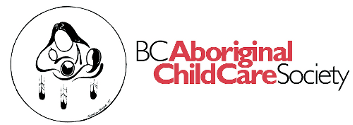Developmental milestones among Aboriginal children in Canada (Record no. 1137)
[ view plain ]
| 000 -LEADER | |
|---|---|
| fixed length control field | 02112nab a22001937a 4500 |
| 003 - CONTROL NUMBER IDENTIFIER | |
| control field | BCACCS |
| 005 - DATE AND TIME OF LATEST TRANSACTION | |
| control field | 20181113062557.0 |
| 008 - FIXED-LENGTH DATA ELEMENTS--GENERAL INFORMATION | |
| fixed length control field | 140918s2014 onc||||| |||| 000 0 eng d |
| 040 ## - CATALOGING SOURCE | |
| Original cataloging agency | BCACCS |
| 100 ## - MAIN ENTRY--PERSONAL NAME | |
| Personal name | Findlay, Leanne C. |
| 9 (RLIN) | 228 |
| 245 10 - TITLE STATEMENT | |
| Title | Developmental milestones among Aboriginal children in Canada |
| Statement of responsibility, etc. | Leanne Findlay, Dafna Kohen, Anton Miller |
| Medium | [citation] / |
| 260 ## - PUBLICATION, DISTRIBUTION, ETC. (IMPRINT) | |
| Date of publication, distribution, etc. | 2014. |
| 520 3# - SUMMARY, ETC. | |
| Summary, etc. | BACKGROUND: Windows of achievement provide age ranges for the attainment of early developmental skills. Group-specific research is warranted given that development may be influenced by social or cultural factors.<br/><br/>OBJECTIVES: To examine developmental milestones for Inuit, Métis and off-reserve First Nation children in Canada, based on developmental domains collected from the 2006 Aboriginal Children's Survey. Sociodemographic and health predictors of risk for developmental delay were also examined.<br/><br/>RESULTS: The ranges in which children achieve certain developmental milestones are presented. Gross motor and self-help skills were found to be achieved earlier (across the three Aboriginal groups), whereas language skills were achieved slightly later than in Canadian children in general. Furthermore, health factors (eg, low birth weight, chronic health conditions) were associated with late achievement of developmental outcomes even when sociodemographic characteristics were considered.<br/><br/>CONCLUSIONS: Findings suggest that the timing of milestone achievement may differ for Aboriginal children, highlighting the importance of establishing culturally specific norms and standards rather than relying on those derived from general populations. This information may be useful for practitioners and parents interested in identifying the age ranges for development, as well as age ranges indicating potential for developmental risk and opportunities for early intervention among Aboriginal children. |
| 650 #0 - SUBJECT ADDED ENTRY--TOPICAL TERM | |
| Topical term or geographic name as entry element | Child development |
| 9 (RLIN) | 98 |
| 700 ## - ADDED ENTRY--PERSONAL NAME | |
| Personal name | Kohen, Dafna E. |
| 9 (RLIN) | 230 |
| 700 1# - ADDED ENTRY--PERSONAL NAME | |
| Personal name | Miller, Anton |
| 9 (RLIN) | 113 |
| 773 0# - HOST ITEM ENTRY | |
| Related parts | Vol. 19, no. 5 (2014), p. 241-246 |
| Title | Paediatrics & Child Health |
| 942 ## - ADDED ENTRY ELEMENTS (KOHA) | |
| Source of classification or shelving scheme | |
| ARTICLE | Journal Article |
No items available.
